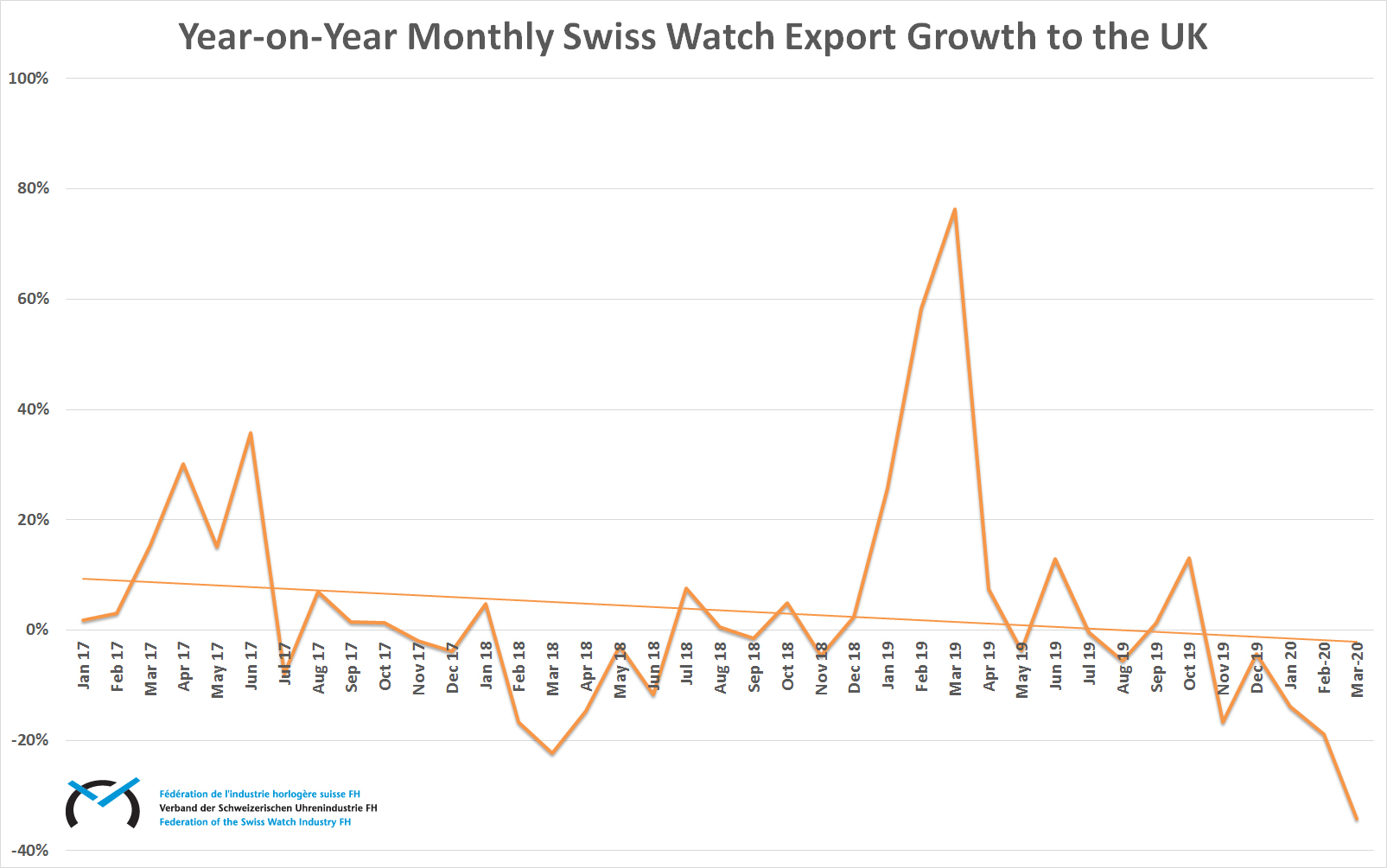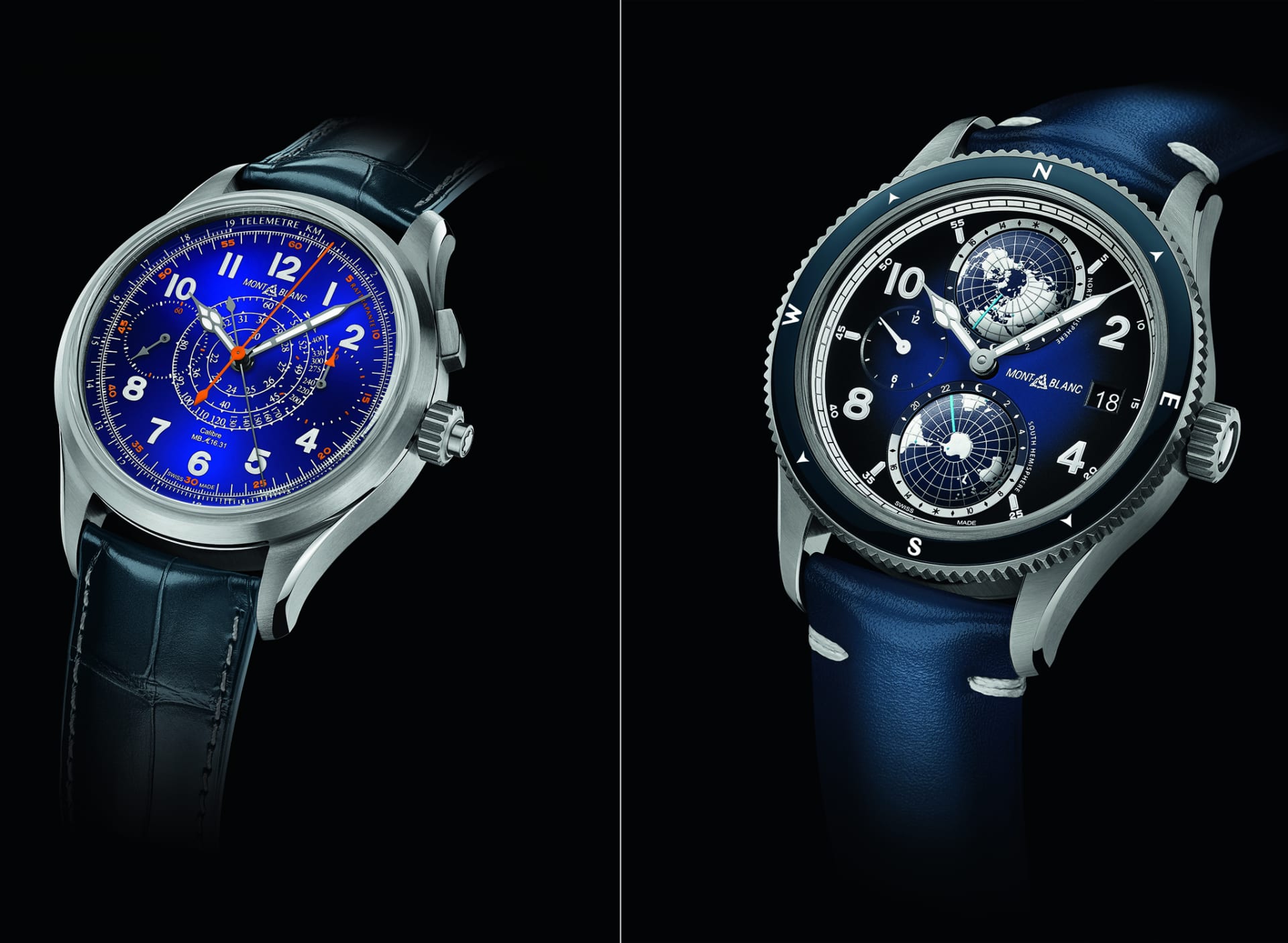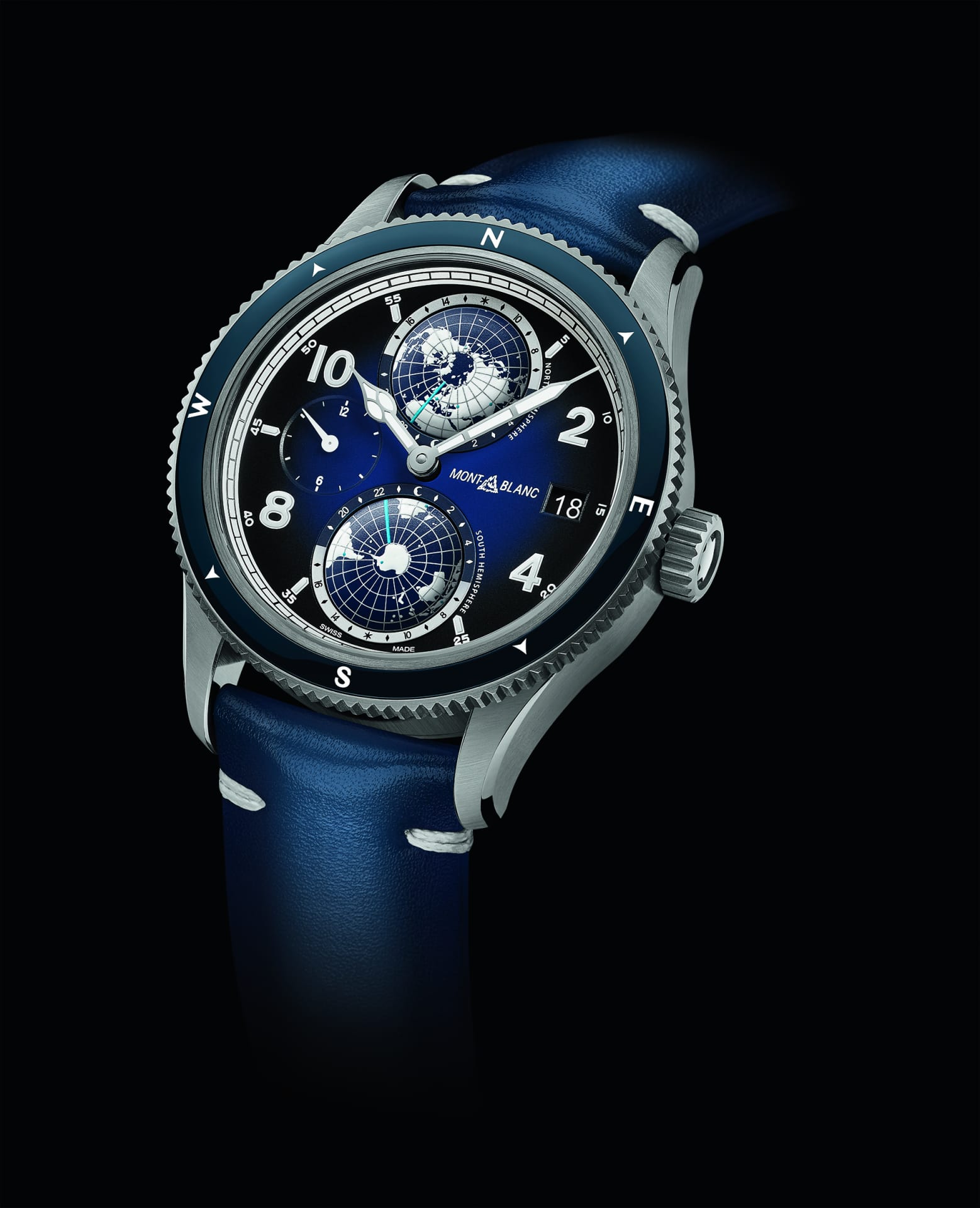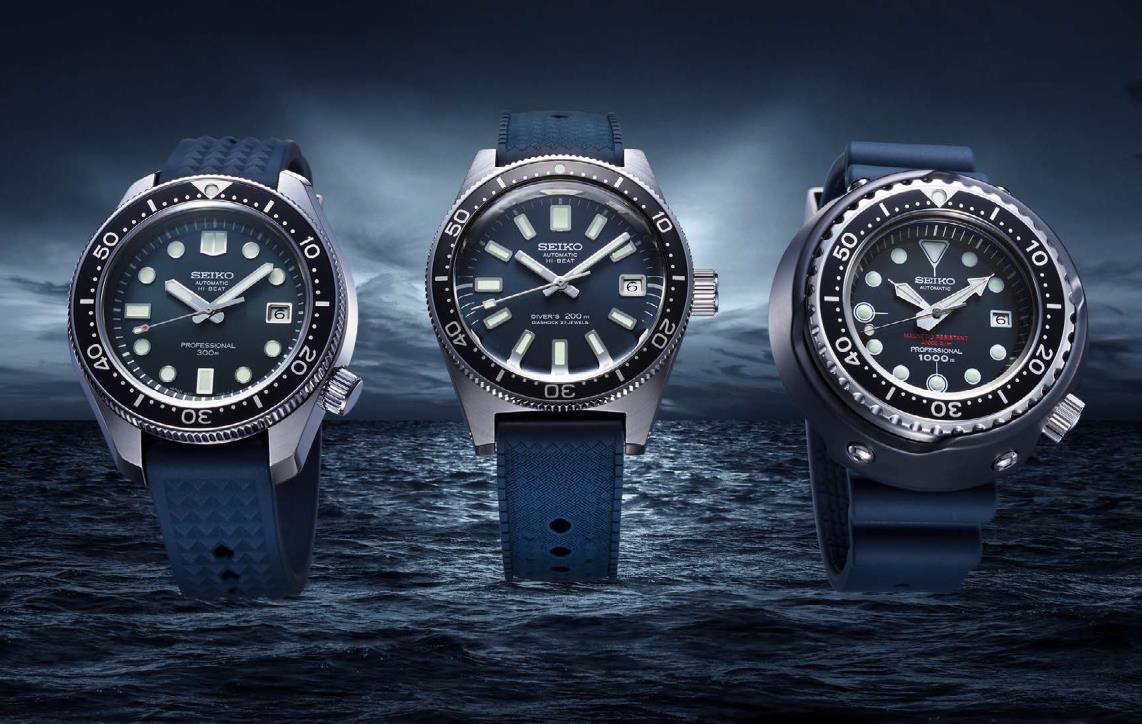The average sale price for a Seiko watch in Japan is over $1,000. In the United States it is under $500. That’s a problem because the volume end of the market is being undermined by discounting from the amorphous mass of bot-driven ecommerce players, and eaten into by smartwatches made by the major tech companies. Seiko’s response is to keep making better and better watches that command higher price points, and it wants to work with a growing network of independent retailers that appreciate the quality, tradition and history of Seiko as a watchmaker.
In the early days of smartwatches, there was talk of Samsung and Apple laying waste to the traditional watch market in the way that streaming did for CDs.
It has not worked out that way.
There are now more Apple Watches sold every year than the entire Swiss watch industry churns out, but the luxury marques have barely been affected. It is the volume end of the traditional watch market that has been transformed.
Sales of fashion watches from the likes of Fossil Group and Movado are in decline, and the retailers that used to stock these watches are dropping the brands because they cannot compete with online operators.
Brands like Seiko have been less affected, partly because the style of their sports models is so fashionable right now, but also because it has poured investment into making more valuable, and therefore more expensive, watches. And far more of the portfolio uses mechanical movements, which customers appreciate as a greater point of difference to smartwatches than quartz.
The company now competes in several markets. There is plenty to admire at sub-$500 price points, including the Seiko 5 Sport Automatics that re-launched in 2019 and classical quartz models for men and women. But the business has been moving upmarket, with a far higher proportion of new launches listing with four figure price tags. There are different tiers of retail partners for the premium models, and the brand is generating scarcity through limited and special editions, which keep prices firm in stores and online.

It is notable how much of Seiko’s line up for fall 2020 is in the premium category, and Munehisa Shibasaki, president and CEO of Seiko Watch of America, welcomes the transition as he works to shift the center of gravity of the brand. “The Seiko brand value in the US is not as high as other markets,” he tells WatchPro. “For example, the average unit price in Japan, which is one of our top markets, is $1,000, but is less than $500 in the US.”
The aim is to reduce Seiko’s dependence on mass market channels where Mr Shibasaki says its lower priced solar watches are being heavily discounted. “Recently we changed our marketing direction to be focused on targeting upmarket as a part of our long-term strategy. Of course, it is not an easy tasks but we gradually realized that there is a huge Seiko fan group existing in the US who have been waiting for better quality Seiko watches in this market,” he describes.
The internet has broken down the geographical borders between markets like Japan, where Seiko sells more expensive watches, and the United States. Customers in this market like what they see. “The recent development of watch industry-focused internet media such as blogs and YouTube channels has helped the US watch lover to understand the Seiko brand history and heritages which is elevating the perception of our brand,” says Mr Shibasaki.
“Our limited edition watches sell out very quickly even though the MSRPs are over $3,000 to $5,000. This is because Seiko has a long and serious history of watchmaking with many legendary stories. By establishing shop-in-shops and boutiques, and by presenting limited editions, we create a clear view of the Seiko brand and this helps them to understand our brand further. These are very important tactics for us to appeal to higher tier retail partners and new consumers to show how the Seiko brand is different from other Swiss brands,” he adds.
This year’s watch launches have been disrupted by the Coronavirus outbreak, but there is still a broad mix of new collections hitting stores over summer, fall and winter. Precise on-sale dates are still in flux, but the watches are worth waiting for, particularly some top end classical Presage pieces and an exciting range of Prospex sporty dive watches that will fly out of retailers’ doors when they reopen.
2020 is the 55th anniversary of Seiko’s first dive watch, the 62 MAS, which launched in 1965 with an automatic movement and 150 meter water resistance. It set the standard for Japanese dive watches and paved the way for Seiko’s first hi-beat saturation diver in 1968, and the 1975 titanium one-piece “tuna” design which took Seiko deeper into the professional diving market.
This year’s Prospex line draws on that rich heritage with three limited editions twinned with the watches that inspire them. There is a 55th anniversary of the 1965 First Seiko Diver’s watch, a 1968 Hi-Beat, and a First Tuna. Each of the Ever-Brilliant steel models has a production run of only 1,100 pieces world-wide, and will sell in the United States for $6,300, $6,800 and $4,500, respectively. There are also modern interpretations of the First Diver 65 models in the $1,000 to $1,350 price range.
The 2020 Prospex models build on the momentum of the Prospex LX, which last year won the best diver’s watch award at the Grand Prix d’ Horlogerie de Genève, and Mr Shibasaki believes is perfect for the US market. “I think the American consumer is very open-minded for new technology and they love it. The Prospex LX line is equipped with the Spring Drive movement. Spring Drive is still very new compared to a regular mechanical watch movement, and it is only available from Seiko. Not only is Spring Drive relatively new to the market, it is a very complicated movement and all its components are assembled by the hands of a well-trained Japanese craftsman,” he explains.
Seiko’s 2020 Presage range of classical watches now has models priced from $425 for a cocktail bar-inspired collection with complex textured dials and hand-wound mechanical movements; up to a 500-piece limited edition known as the Porco Rosso, a Japanese animated comedy movie. It will sell for $5,600. In between are automatic models with pristine white or blue enamel dials priced at $1,300.


GPS-controlled Astron timekeepers are coming in titanium cases this year, which nudges prices north of $2,000. And the Seiko 5 Sports family has grown considerably with leather straps introduced for the first time and a number of new dial, bezel, case and strap color combinations. They sell for $275 upwards.

Seiko is still comfortable competing with fashion and smartwatches in the sub-$500 space because it believes its mechanical watches appeal to different customers. However, its prestige watches require a different type of retailer to the mass market partners they work with. “While we value our department store business and support them in every way, our focus right now is on the independent retailer. We view the independent channel as an important vehicle for brand building and expansion, especially the over $1,000 price point. We are always looking at what the best distribution mix is for our brand,” explains Mr Shibasaki.
So Seiko aims to mean different things to different customers and retail partners, not unlike the days when Seiko and Grand Seiko were two divisions of the same company.
The future, Mr Munehisa hopes, will see the brand move more strongly in the direction of premium watches housing mostly mechanical movements and sold through retailers that are passionate about the tradition and history of the brand.
Asked whether he thought the future for Seiko would be more in mechanical than quartz, he notes: “Interesting question. In a short time I think I will choose mechanical watches. Because we are now trying to expand the sales of higher priced watches much more than before and also would like to establish a better independent retail network. Those consumers and independent retailers know and love mechanical watches.”
“In the long term, as the first company to develop quartz watch technology in 1969, and the only company to develop the Spring Drive movement, I do not want to limit Seiko to only one direction but provide the best assortment to the US consumer and retailers by utilizing all of our resources and assets,” Mr Shibasaki concludes.
[Editor’s note: This article first appeared in the USA edition of WatchPro]
How to make the perfect dive watch

Seiko’s Prospex LX beat every Swiss watchmaker to win the GPHG prize for best diver’s watch in 2019. The design is based on a historic reference from the late 1960s, but updated with broad flat surfaces in polished and brushed titanium giving it depth and complexity.
Inside, the watch is driven by another award-winner, the 5R Spring Drive caliber, which offers one-second a day precision alongside high levels of shock and temperature resistance, which was tested to the limit when it was worn on a space walk by an astronaut on route to the International Space Station and when Japanese adventurer Yuichiro Miura wore a Spring Drive watch on his third successful ascent of Mount Everest.


I don’t think so… Seiko is predominantly an affordable mass market brand and will likely remain so for the foreseeable future. They lack the manufacturing capabily to produce the quality levels that would allow them to compete successfully in the $1000 plus range without substantial investment.. In the $5000 range, high quality production quantities will be difficult to ramp up.